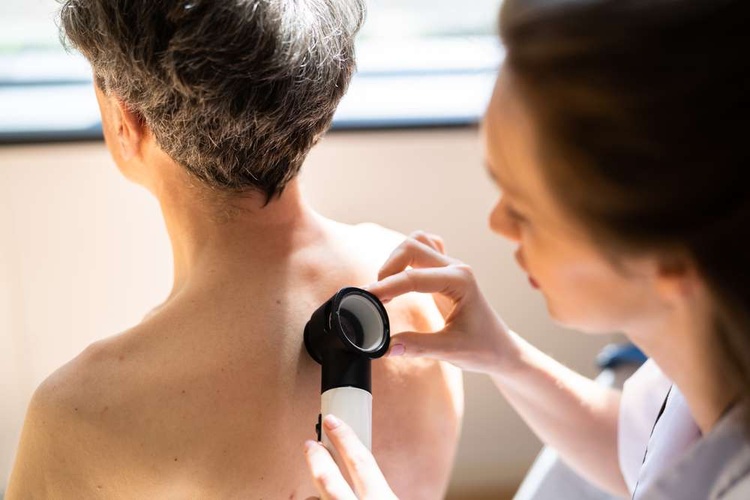Basal Cell Carcinoma Visual Symptom Guide: How to Recognize the Early Signs
Basal cell carcinoma represents the most frequently diagnosed form of skin cancer, affecting millions of people worldwide each year. While this type of cancer rarely spreads to other parts of the body, early detection remains crucial for successful treatment and preventing potential complications. Understanding the visual characteristics and warning signs of basal cell carcinoma empowers individuals to monitor their skin effectively and seek timely medical attention when concerning changes appear.

Basal cell carcinoma develops in the basal cells located in the deepest layer of the epidermis, typically in areas frequently exposed to ultraviolet radiation. This cancer grows slowly and often appears as seemingly harmless skin changes, making visual recognition skills essential for early intervention. Healthcare professionals emphasize that knowing what to look for can significantly impact treatment outcomes and reduce the risk of advanced complications.
Common Visual Signs and Variations
Basal cell carcinoma manifests in several distinct visual forms, each presenting unique characteristics that require careful observation. The nodular type appears as a pearly or waxy bump with visible blood vessels running across its surface. These lesions often have a translucent quality and may develop a central depression or ulceration as they progress.
The superficial type presents as a red, scaly patch that resembles eczema or psoriasis, making it particularly challenging to identify without professional evaluation. Morpheaform basal cell carcinoma appears as a scar-like lesion with poorly defined borders, often feeling firm to the touch. Pigmented variants may contain brown, black, or blue coloration, potentially causing confusion with melanoma or benign moles.
Key Visual Clues to Watch For
Several specific visual indicators warrant immediate medical attention when monitoring skin changes. Persistent sores that fail to heal within four weeks represent a significant warning sign, particularly when accompanied by bleeding, crusting, or oozing. New growths with a pearly, translucent, or waxy appearance should be evaluated promptly, especially when located on sun-exposed areas.
Changes in existing moles or skin lesions, including alterations in size, shape, color, or texture, require professional assessment. The presence of visible blood vessels within a lesion, known as telangiectasias, often indicates the need for further examination. Areas that itch persistently, feel tender, or develop irregular borders should not be ignored, as these symptoms frequently accompany basal cell carcinoma development.
Diagnosis and Treatment
Accurate diagnosis of basal cell carcinoma requires professional medical evaluation, typically beginning with a thorough skin examination by a dermatologist. Visual inspection under specialized lighting helps identify suspicious lesions, while dermoscopy provides magnified views that reveal subtle characteristics invisible to the naked eye. When visual assessment suggests potential malignancy, a biopsy procedure removes tissue samples for microscopic analysis.
Treatment options vary depending on the size, location, and subtype of the carcinoma. Mohs micrographic surgery offers the highest cure rates for complex cases, removing cancerous tissue layer by layer while preserving healthy surrounding skin. Excisional surgery, electrodesiccation and curettage, cryotherapy, and topical medications provide alternative approaches for appropriate candidates. Radiation therapy may be recommended for patients who cannot undergo surgical procedures.
Prevention and Skin Protection
Effective prevention strategies significantly reduce the risk of developing basal cell carcinoma through consistent sun protection practices. Daily application of broad-spectrum sunscreen with SPF 30 or higher provides essential protection against harmful ultraviolet radiation. Protective clothing, wide-brimmed hats, and sunglasses create physical barriers that complement chemical sun protection.
Avoiding peak sun exposure hours between 10 AM and 4 PM helps minimize cumulative UV damage. Regular self-examinations enable early detection of concerning changes, while annual professional skin screenings provide comprehensive evaluation by trained specialists. Individuals with fair skin, light-colored eyes, blonde or red hair, and extensive sun exposure history should prioritize these preventive measures.
Prognosis and Long-Term Outlook
The prognosis for basal cell carcinoma remains excellent when detected and treated early, with cure rates exceeding 95% for most cases. Unlike other forms of skin cancer, basal cell carcinoma rarely metastasizes to distant organs, making it highly treatable through various therapeutic approaches. However, delayed treatment can result in significant tissue destruction and cosmetic complications, particularly when lesions occur on the face or other visible areas.
Long-term outlook depends largely on tumor characteristics, treatment timing, and individual risk factors. Patients who develop one basal cell carcinoma face increased risk of developing additional lesions, making ongoing surveillance essential. Regular follow-up appointments allow healthcare providers to monitor for recurrence and detect new cancers early. With appropriate treatment and preventive measures, most individuals with basal cell carcinoma maintain excellent quality of life and normal life expectancy.
Recognizing the visual signs of basal cell carcinoma empowers individuals to take proactive steps in protecting their skin health. While this cancer type generally carries a favorable prognosis, early detection through visual awareness and professional evaluation remains the cornerstone of successful treatment. Combining regular self-examination with comprehensive sun protection strategies provides the best defense against this common but highly treatable form of skin cancer.
This article is for informational purposes only and should not be considered medical advice. Please consult a qualified healthcare professional for personalized guidance and treatment.




